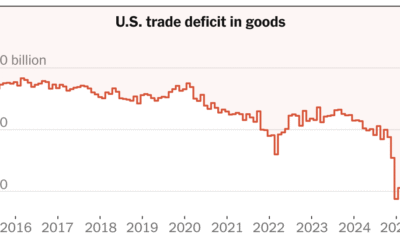News
Apple Leads Surge in Global Tech Shares After Trump Tariff Relief
**Apple and Tech Stocks Soar as Trump Tariff Exceptions Ignite Market Rally**
What’s Happening?
A wave of optimism has swept global tech markets following a pivotal shift in U.S. trade policy. After President Donald Trump announced a significant exemption for major tech firms from his proposed 100% tariffs on semiconductors and chips, shares of industry giants like Apple surged. Investors are celebrating this unexpected reprieve, which has provided a much-needed boost to an already volatile sector.
Where Is It Happening?
The market rally is impacting major global exchanges, including the NASDAQ, NYSE, and key European markets such as London and Frankfurt. Tech hubs worldwide are seeing a ripple effect as investors react to the favorable trade announcement.
When Did It Take Place?
The news broke on Thursday morning, triggering an immediate response from traders and investors. The exemption’s impact on market behavior is expected to be felt throughout the week.
How Is It Unfolding?
–
–
–
–
Quick Breakdown
–
–
–
–
Key Takeaways
This unexpected move by President Trump has provided a much-needed lifeline to the tech industry, which has been grappling with uncertainty due to ongoing trade wars. The exemption from crippling tariffs means companies like Apple can now operate with greater financial clarity, potentially leading to more innovation and investment. For investors, this news is a sign that the worst-case scenarios may have been averted—at least for now. However, the situation remains fluid, and any new developments could shift the market’s trajectory.
The long-term impact of these tariff exemptions will depend on how Washington and Beijing continue to navigate their trade relationship. Investors should still tread cautiously.
– Sarah Chen, Chief Market Analyst at Global Investment Group
Final Thought
President Trump’s decision to spare the tech sector from devastating tariffs has reignited market enthusiasm, offering a glimmer of hope in an otherwise turbulent economic climate. While the move provides immediate relief, the fragility of global trade negotiations means uncertainty remains. For now, tech stocks are riding the wave of optimism, but the question remains: how long will this rally last?

















